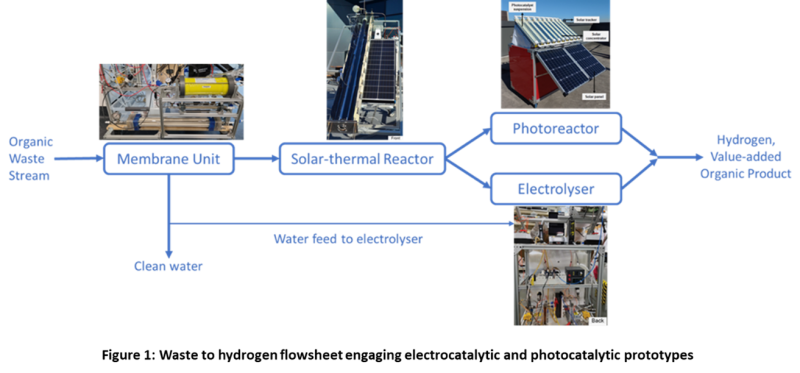Project summary
A richness of resources in Australia have seen it be a significant energy exporter to other nations. For instance, in 2021, natural gas (LNG) exports from Australia were ~$50 billion AUD. Increasingly though, many countries are transitioning away from fossil-fuel derived energy sources to sustainable alternatives, such as renewable hydrogen, however they do not necessarily have the capacity to do so. The opportunity exists for Australia to remain a strong energy exporter by contributing to the expansion of renewable (solar) hydrogen into the global energy market.
There is considerable interest in producing H2 from electrochemical water splitting in a feasible yet sustainable way for worldwide distribution. While water is a renewable and abundant resource, its use as a H2 source is relatively energy intensive (>4.5 kWh mH2–3), is subject to competing uses (e.g., drinking water, agriculture) and is reasonably costly (i.e., the water oxidation reaction is sluggish). Consequently, a strong drive exists to develop unique approaches to overcome these challenges, such as using a waste organic stream in place of water for the electrolyser or as a feedstock for photocatalytic systems.
Waste streams containing organics originate from many different processes. Using these organic-containing waste streams as a H2 source has distinct advantages, from economic to energy benefits. As the organics are a waste, they are very low cost, and in terms of electrochemistry, generally have a very low standard oxidation potential (< 0.2V) compared to water oxidation (1.23V). Further, organic oxidation using electrochemical and photocatalytic strategies is selective and scalable, delivers zero/minimal CO2 emissions and has the added advantage of potentially producing value-added organic products from the process.
The Particles and Catalysis Research lab (PartCat) has developed two prototype systems (Figure 1), based on electrocatalytic and photocatalytic concepts, which can generate renewable hydrogen using only sunlight and a waste organic stream. In collaboration with Rio Tinto, through the Trailblazer Universities Program, two PhD projects will establish the capacity of the two prototype systems for recovering clean hydrogen from organic waste streams in remote communities
Further information:
- Particles and Catalysis Research Group at https://www.pcrg.unsw.edu.au/
- Rio Tinto at https://www.riotinto.com/en
- Trailblazer Universities program at https://www.education.gov.au/trailblazer-universities-program
